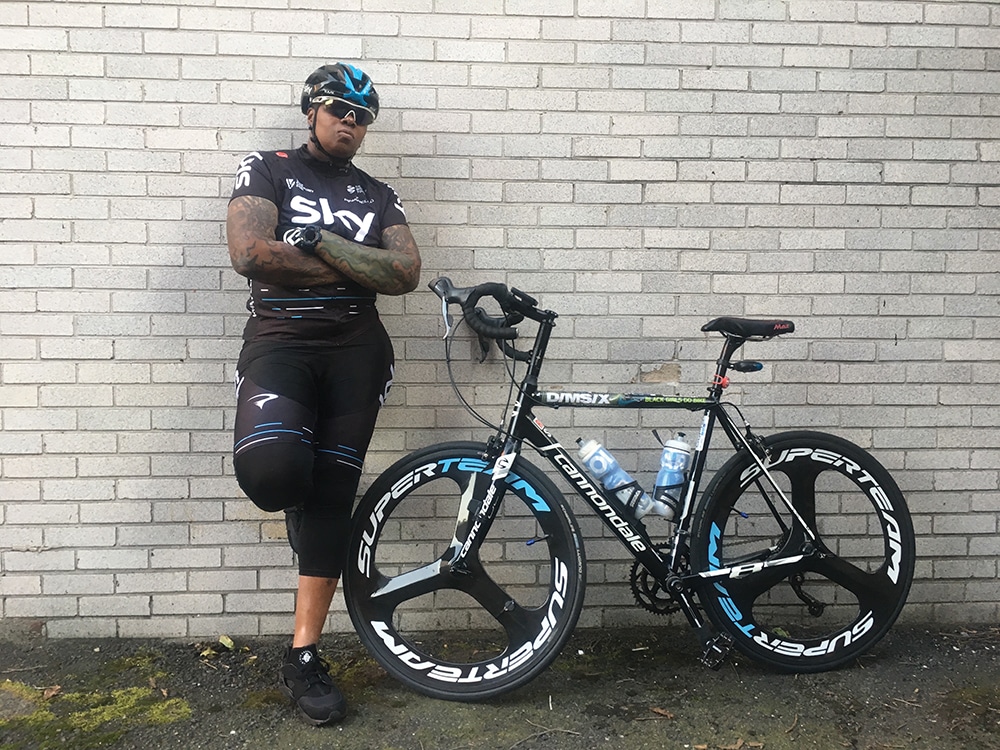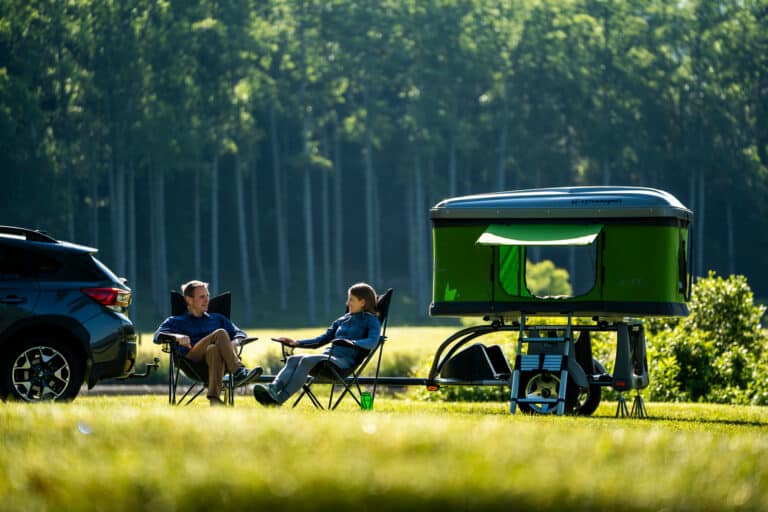Biking Advocate Donna Iannicelli Discusses Breaking Race Barriers in Competitive Cycling
Donna Iannicelli has always been fascinated with bikes—particularly tricked-out downhill rigs that test limits on steep trails. Growing up, she had a friend who followed extreme sports. That’s how she first learned about Missy “The Missile” Giove, a downhill racer and one of America’s first mountain bike stars. The more she read about the sport, the more Iannicelli began to get into the technology behind the bikes and crave the adrenaline that comes with barreling down the mountain.
“Cycling is euphoric and empowering,” Iannicelli said. “You and your bike become one mind, body, and spirit.”
Yet when she told people she wanted to be a downhill mountain biker, Iannicelli said people didn’t understand her desire. “Why don’t you go play basketball?” she said was a frequent response. So the rebellious part of Iannicelli was attracted to the idea of breaking barriers in the world of extreme sports. “The lack of African American women—there are none in this industry that are elite level athletes,” she said.
But in the wake of the country’s widespread reckoning with systemic racism, that could hopefully start to change. In August, USA Cycling announced a new partnership with Black Girls Do Bike. With over 90 chapters across the country, the partnership includes racing, coaching, and event support for Black Girls Do Bike members.
“Black Girls Do Bike is an amazing organization because they are spread across so many different levels of the sport,” said Bouker Pool, USA Cycling’s chief commercial officer. “Managing our Olympic and national teams, we can utilize our resources to help them get a racing team that reflects their objective.”
One initiative is to create a feeder program for kids to see themselves as cyclists. “If you named the Black professional racers, you could probably do it on one hand currently,” said Monica Garrison, founder of Black Girls Do Bike. “If you don’t see people who look like you accomplish something at an elite level, somewhere in the back of your mind you assume that maybe you can’t do it or people don’t want you to do it.”
At the beginning of 2020, Ayesha McGowan became the first African American female pro road cyclist. But Iannicelli said there isn’t anyone like that on the competitive downhill racing side. “Just getting girls interested in sports and keeping them interested will be a challenge because the role models are not there outside of the WNBA, women’s boxing, and a few other sports,” she said. “There are no mainstream role models in cycling.”
Although she doesn’t see herself reaching the competitive level, Iannicelli is working to educate the public on the challenges and barriers to getting into this sport. She talked with BRO about her experience and the world of downhill mountain biking.
BRO: What do you think is important for readers to understand about you and your desire to race competitively?
Iannicelli: I work a blue-collar, manual labor job that doesn’t pay very well. Most of the money I earn has to go to my rent and my expenses. So there really isn’t any disposable time or income left over to participate in anything outside of riding my bike in the street at the recreational level. Anything outside of that, taking any risk, that’s unlikely. I need my limbs to work because I lift boxes for a living. If I take a risk and I injure myself, then I have to eat that. That’s on me. I have to be fully responsible for what I’m doing. You’re dealing with a sport that has a high injury threshold. You need to have access to resources.
BRO: A number of organizations, including Black Girls Do Bike and All Mountain Brothers, have popped up in the last decade encouraging more people to get out on bikes. How does recreational cycling differ from the competitive side of cycling?
Iannicelli: That’s cool if you want to just ride your bike around the street or if you want to hang out with your friends. That’s all fine and dandy. But if you’re talking about becoming an elite-level athlete, or even just a basic competitor, you’re talking thousands and thousands of dollars in training, coaching, diet, health insurance, because you’re going to fall and get injured. There are entry fees for racing. You need money to travel to these races. You need a place to live while you’re doing this. All of that has to be supported. If you don’t have that, you’re not going to be able to move up in an industry like that. You need a sizable chunk of disposable income even if you’re just doing something like this as a hobby.
BRO: What do you see as one of the biggest challenges in getting more people to understand the barriers in downhill mountain biking?
Iannicelli: There’s a lack of community education as far as what the public understands about downhill mountain bike racing, general mountain biking, and extreme sports. It’s hard to explain that to a person where they don’t even know where to begin with a topic like that. They think downhill mountain bike racing is road cycling. They think it’s like the Tour de France. It’s not just hopping on a bike and going to a race. There are so many things that need to be handled before you do something like that. This is the part usually where most folks do not want to acknowledge what the issues are.
BRO: How do you see cycling, especially on the competitive side, becoming a more inclusive and welcoming space?
Iannicelli: Inner city youth from marginalized, disadvantaged communities would have to get access to competition-level equipment and the cycling infrastructure itself. The infrastructure consists of coaching, mentors, professional equipment, bike training facilities, bike mechanics, cross training, strength and conditioning, health insurance, and resources for travel and lodging. These changes would have to be addressed and implemented through the USA Cycling governing body, and its high-ranking officials and affiliates that control the cycling industry.








